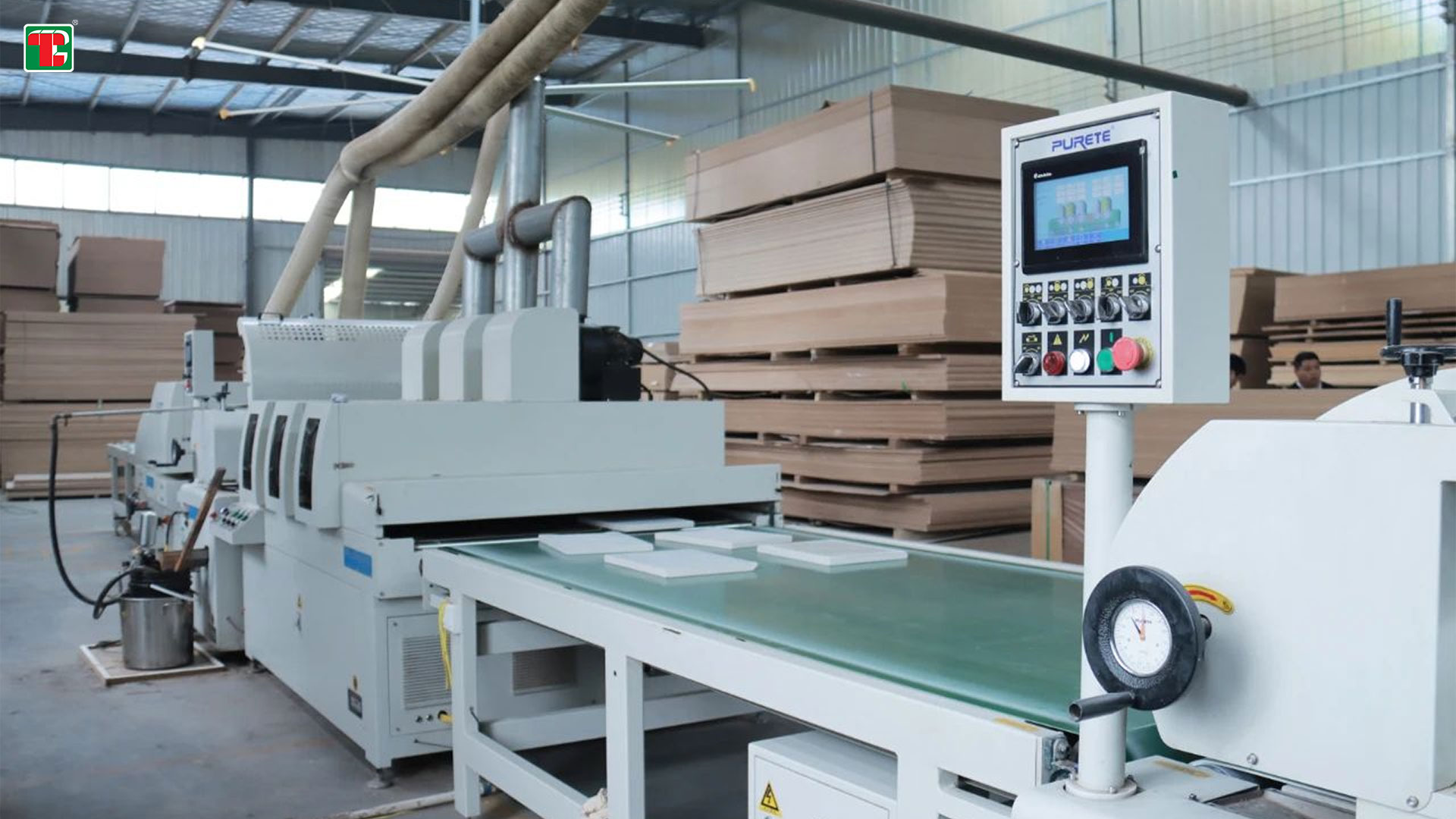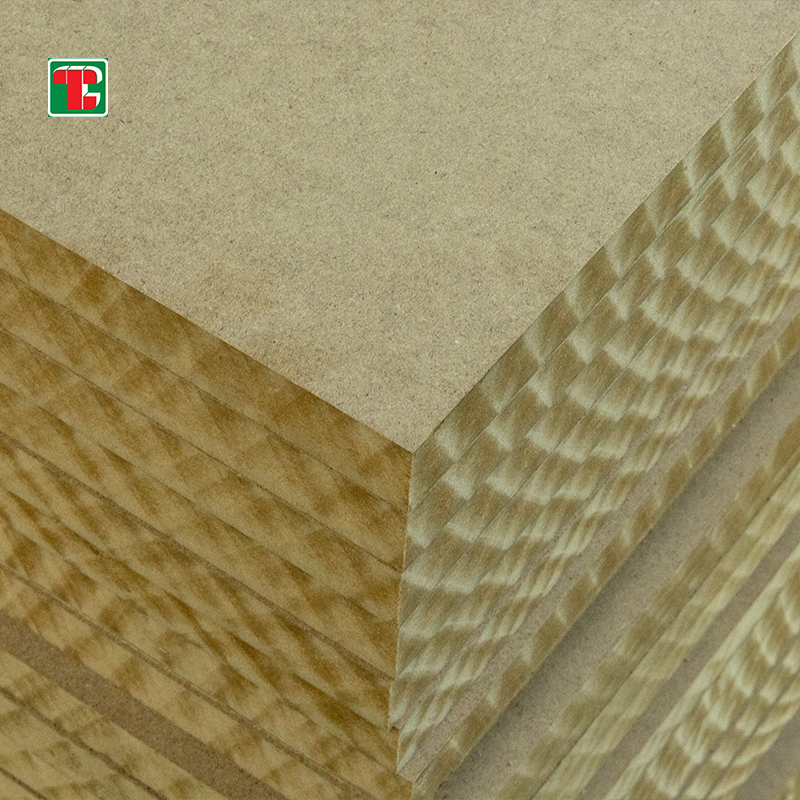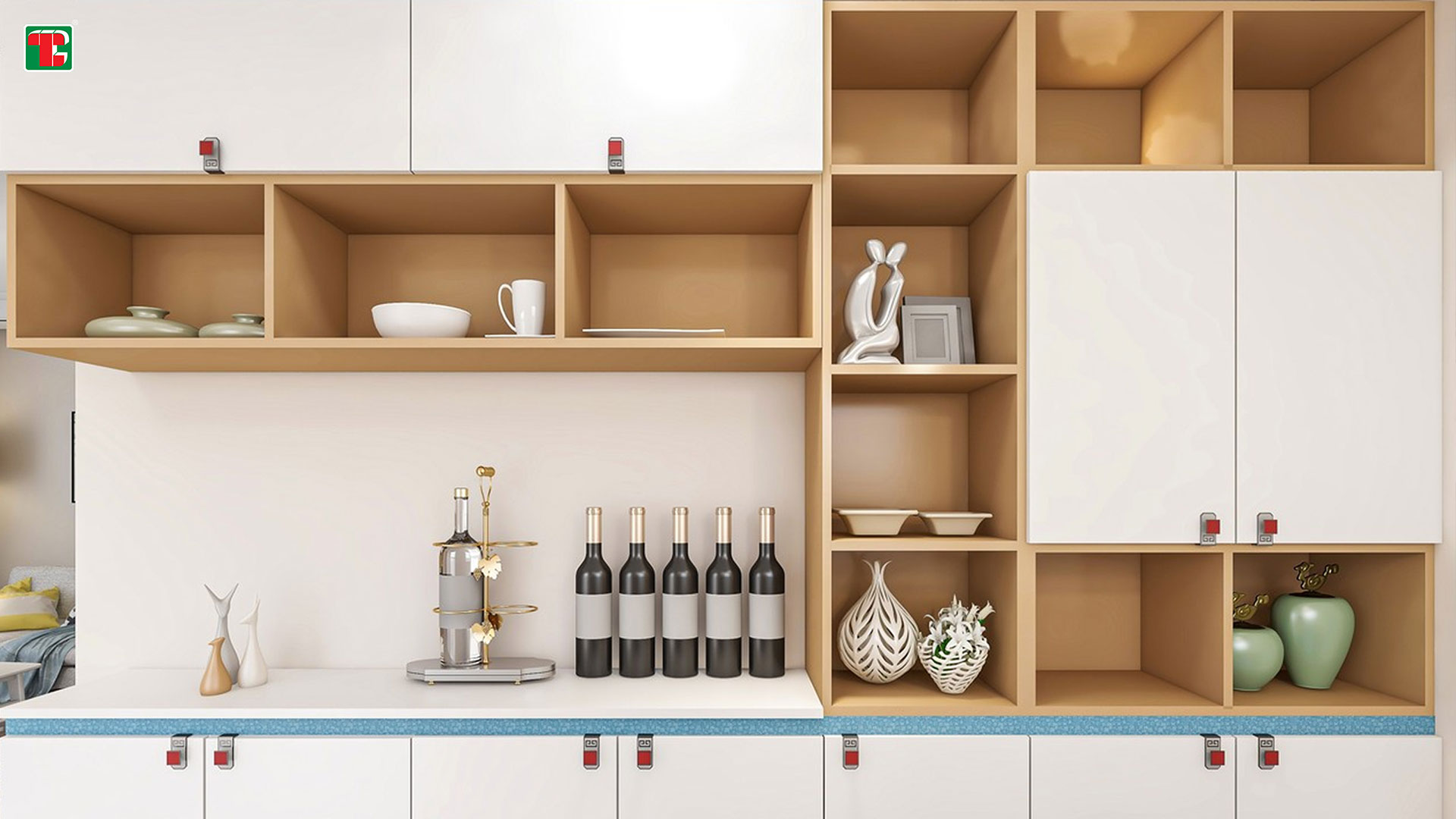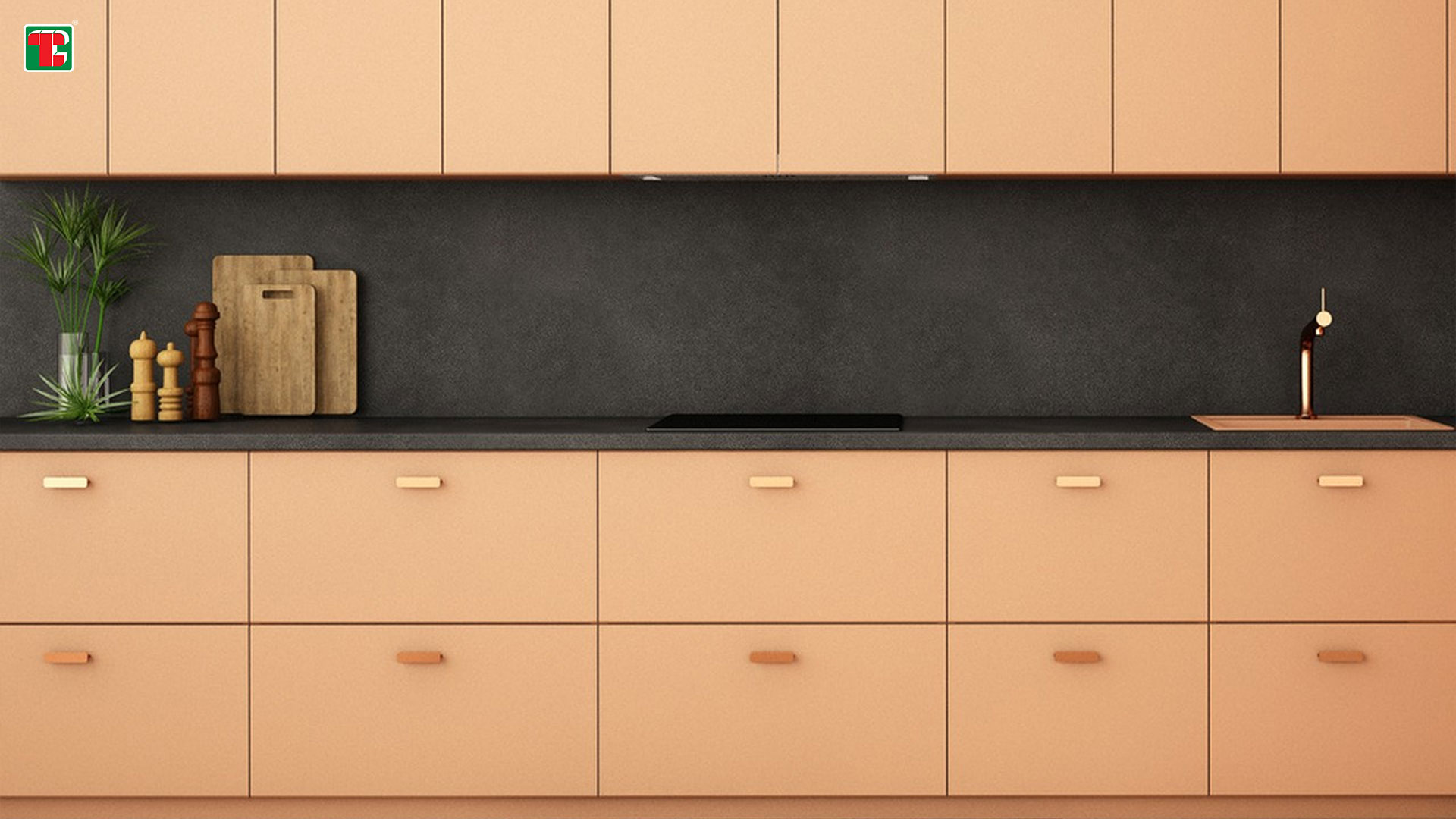Medium-Density Fiberboard (MDF) stands out as a cost-effective and versatile engineered wood product, rivaling plywood in various applications. This article delves into the composition, advantages, drawbacks, and considerations for using MDF in woodworking projects.

Composition and Manufacturing Process
The composition and manufacturing process of Medium-Density Fiberboard (MDF) play a pivotal role in defining its unique characteristics. Let's delve into the key aspects of how MDF is created:
Composition:
1. Raw Materials:
MDF begins with the collection of sawdust and wood shavings, byproducts generated during industrial milling processes.
These fine wood particles serve as the primary raw materials for MDF production.
2. Binding Agents:
The wood fibers are dehydrated to remove moisture, enhancing their suitability for binding.
Resin, often a formaldehyde-based adhesive, is mixed with the dehydrated wood fibers. This adhesive acts as a binding agent, holding the fibers together during the manufacturing process.
3. Additional Components:
Wax is introduced into the mixture to provide water resistance and enhance the overall durability of the MDF panels.
The combination of wood fibers, resin, and wax creates a homogeneous mixture ready for the next stages of manufacturing.
Manufacturing Process:
1. Formation of Panels:
The prepared mixture is formed into flat panels, creating a uniform surface without the knots and grain found in natural wood.
These panels are initially soft and malleable, allowing for shaping during the subsequent stages of manufacturing.
2. Application of Heat and Pressure:
The panels undergo a high-temperature and high-pressure process. This step ensures the compression of the wood fibers and the hardening of the resin, resulting in a rigid and durable structure.
This phase is crucial for transforming the initially soft mixture into solid, stable panels.
3. Sanding and Finishing:
After the application of heat and pressure, the panels undergo extensive sanding.
Giant machines are employed to sand the panels, creating a smooth and even surface finish.
This final touch enhances the aesthetic appeal of MDF and prepares it for cutting into standardized dimensions.
The complete MDF production process can be referred to in the following video
Appearance and Availability:
The appearance and availability of Medium-Density Fiberboard (MDF) are significant factors that contribute to its widespread use in woodworking projects. Let's explore these aspects in detail:
Appearance:
1. Color:
MDF boards typically exhibit a tan or dark brown color. This neutral tone makes them adaptable for a variety of finishes, including painting and veneering.
2. Texture:
Unlike natural wood, MDF has a consistent and smooth texture, free from knots or grain patterns. This uniformity allows for a sleek and polished finish on completed projects.
3. Thickness:
MDF boards are commonly available in two primary thicknesses: 1/2 inch and 3/4 inch. These standardized thicknesses provide versatility for different woodworking applications.
Availability:
1. Cost-Effectiveness:
MDF is known for its affordability, often making it a cost-effective alternative to solid wood or other engineered wood products. The cost of larger MDF sheets is generally reasonable, making it an attractive option for budget-conscious projects.
2. Market Presence:
MDF is widely available in home improvement stores, lumberyards, and online retailers. Its accessibility contributes to its popularity among DIY enthusiasts and professional woodworkers alike.
3. Markings and Properties:
MDF boards may have markings or stamps indicating specific properties. For example, a blue or red marking may denote fire retardancy, while a green marking may signify resistance to moisture. These markings assist users in selecting the appropriate type of MDF for their intended application.
4. Size Options:
MDF sheets come in various sizes, catering to the diverse needs of woodworkers. The availability of different dimensions ensures flexibility in designing and executing projects of varying scales.
Understanding the appearance and availability of MDF provides woodworkers with the necessary information to make informed decisions when selecting materials for their projects. The neutral color, consistent texture, and cost-effective nature of MDF contribute to its widespread use in a range of woodworking applications

Advantages
The advantages of using Medium-Density Fiberboard (MDF) in woodworking projects are diverse, making it a popular choice for a range of applications. Here are some key advantages:
1. Ease of Workability:
MDF is easy to work with, requiring no specialized tools or skills. Its consistent density and smooth surface make it pliant and user-friendly for both beginners and experienced woodworkers.}
2. Uniform Texture and Appearance:
Unlike natural wood, MDF has a uniform texture without knots or grain patterns. This consistency provides a smooth and even surface, ideal for projects where a sleek finish is desired.
3. Acceptance of Paint and Veneer:
MDF surfaces accept paint and veneer exceptionally well. This versatility allows for a variety of finishes, enabling woodworkers to achieve the desired aesthetic for their projects.
4. Budget-Friendly Option:
MDF is cost-effective compared to solid wood or other engineered wood products. Its affordability makes it an attractive choice for projects where budget constraints are a consideration.
5. No Warping or Twisting:
Unlike some natural woods, MDF is resistant to warping and twisting. This stability ensures that projects constructed with MDF maintain their shape over time.
6. No Knots or Defects:
MDF is free from knots, defects, or irregularities found in natural wood. This feature simplifies the woodworking process and eliminates the need for special considerations when cutting or shaping.
7. Versatility in Applications:
MDF is suitable for a wide range of applications, including shelving, cabinetry, and trim. Its versatility stems from its consistent composition and ease of customization.
8. Consistent Density:
The consistent density of MDF throughout its structure ensures predictable and reliable performance. This characteristic is especially valuable in precision woodworking projects.
9. Environmentally Friendly Options:
Some MDF products are available with eco-friendly certifications, offering environmentally conscious alternatives. These options appeal to those seeking sustainable materials for their projects.
10. Readily Available:
MDF is widely available in various sizes and thicknesses at home improvement stores, making it easily accessible for woodworkers and DIY enthusiasts.
In summary, the advantages of MDF lie in its ease of workability, uniform appearance, versatility, and cost-effectiveness. These characteristics make it a practical choice for a broad spectrum of woodworking projects, from simple DIY tasks to more complex carpentry endeavors.

Drawbacks
While Medium-Density Fiberboard (MDF) offers several advantages, it is important to be aware of its drawbacks. Here are some key considerations:
1. Weight:
MDF is heavier than plywood, which can make it challenging to handle, especially when working with full-size panels. Care must be taken during transportation to avoid damage to corners and surfaces.
2. Susceptibility to Moisture:
In its untreated state, MDF is prone to swelling or fracturing when exposed to even small amounts of moisture. This limitation restricts its use in areas where water contact or high humidity is a concern.
3. Dust Generation:
Working with MDF generates a substantial amount of fine dust. This powdery dust can be pervasive, making it essential to seal off work areas, cover items to protect them, and be prepared to clean up thoroughly after working with MDF.
4. Health Risks:
Most MDF contains urea-formaldehyde, a suspected carcinogen. Until fully sealed, MDF continues to release off-gases. It is advisable to work with MDF outdoors or in well-ventilated spaces and consider wearing a respirator to minimize exposure.
5. Vulnerability During Transport:
Due to its weight and relatively soft composition, MDF panels are more susceptible to damage during transportation. Extra care is needed to prevent corners from chipping or surfaces from scratching.
6. Limited Load-Bearing Capacity:
MDF may not be suitable for heavy load-bearing applications due to its density and susceptibility to damage. It is important to consider alternative materials for projects with substantial weight requirements.
7. Limited Repair Options:
While minor scratches or dents can be repaired with wood filler, larger damages may be challenging to fix effectively. In some cases, the entire panel may need replacement.
8. Environmental Impact:
The production of MDF involves the use of adhesives, some of which may have environmental implications. While eco-friendly options are available, it's important to consider the environmental impact of the specific MDF product being used.
9. Surface Fragility:
The smooth surfaces of MDF, while aesthetically pleasing, can be prone to scratching and may require extra care during handling and use.
10. Initial Cost vs. Long-Term Durability:
While MDF is budget-friendly initially, its long-term durability in certain conditions may not match that of more expensive materials. Consider the project requirements and longevity expectations when choosing materials.
Maintenance tips for preserving the longevity of MDF surfaces.
Preserving the longevity of Medium-Density Fiberboard (MDF) surfaces is crucial for ensuring the durability and aesthetic appeal of your woodworking projects. Here are some maintenance tips to consider:
1. Avoid Excessive Moisture:
MDF is susceptible to swelling and damage when exposed to moisture. To prevent this, avoid placing MDF furniture or projects in areas prone to high humidity or direct water contact.
2. Seal the Edges:
Unsealed edges of MDF are particularly vulnerable to moisture. Applying a sealant, such as paint or an edge banding, can help protect the edges from water absorption and subsequent damage.
3. Use Coasters and Mats:
When placing objects on MDF surfaces, especially those containing liquids, use coasters or mats. This precaution helps prevent water rings and spills that could compromise the integrity of the MDF.
4. Regular Cleaning:
Clean MDF surfaces regularly to remove dust and debris. Use a soft, damp cloth to wipe down the surfaces gently. Avoid abrasive cleaners or harsh chemicals that may damage the finish.
5. Avoid Direct Sunlight:
Prolonged exposure to direct sunlight can cause MDF surfaces to fade over time. Consider placing MDF furniture or projects away from windows or use curtains and blinds to minimize exposure to sunlight.
6. Furniture Pads:
When using MDF furniture, especially with legs or other points of contact, consider using furniture pads. These pads provide a protective barrier, preventing scratches and dents on the MDF surface.
7. Repair Minor Damage Promptly:
If you notice minor scratches or dents, address them promptly. Use wood filler or a similar product to repair the damaged area, followed by sanding and refinishing if necessary.
8. Avoid Heavy Impact:
MDF is relatively dense but can still be susceptible to dents from heavy impacts. Take care when moving furniture or other objects on or near MDF surfaces to prevent accidental damage.
9. Maintain Stable Temperature and Humidity:
Fluctuations in temperature and humidity can impact the stability of MDF. Aim to maintain a stable indoor environment to minimize the risk of expansion or contraction.
10. Periodic Inspection:
Regularly inspect MDF surfaces for any signs of wear, damage, or changes. Early detection allows for timely maintenance and prevents issues from escalating.
By following these maintenance tips, you can ensure that your MDF surfaces remain in optimal condition, enhancing the longevity and overall quality of your woodworking projects.

Considerations and Suggestions
When working with Medium-Density Fiberboard (MDF), it's essential to take certain considerations into account and follow suggested guidelines to ensure optimal results. Here are key considerations and suggestions for using MDF in woodworking projects:
1. Handle with Care during Transport:
Due to its weight and vulnerability to damage, exercise caution when transporting MDF panels. Enlist additional help to avoid mishandling, especially with full-size panels.
2. Use Moisture-Resistant MDF Where Appropriate:
In applications where exposure to moisture is a concern, opt for moisture-resistant MDF. This variant is specially designed to withstand humidity and offers enhanced durability in damp conditions.
3. Dust Control Measures:
MDF generates fine dust during cutting and shaping. Seal off the work area, cover immovable items, and use a dust collection system or wear appropriate respiratory protection to minimize health risks.
4. Ventilation:
Work with MDF in well-ventilated spaces, preferably outdoors, to mitigate exposure to urea-formaldehyde off-gases. Proper ventilation is crucial, especially during the sealing process.
5. Seal Exposed Edges:
Unsealed edges are susceptible to moisture absorption. Seal exposed edges with paint, edge banding, or a similar protective material to enhance resistance to water damage.
6. Consider Weight in Structural Applications:
Acknowledge the weight of MDF when planning structural applications. For heavy load-bearing projects, assess whether MDF is the most suitable material or if alternatives should be considered.
7. Environmentally Friendly Options:
Explore environmentally friendly MDF options with certifications indicating low formaldehyde content or sustainable sourcing. This consideration aligns with eco-conscious practices in woodworking.
8. Protect Smooth Surfaces:
The smooth surface of MDF can be prone to scratching. Take precautions during handling and use, such as applying furniture pads or using protective covers, to preserve the integrity of the surfaces.
9. Balance Initial Cost with Long-Term Considerations:
While MDF is cost-effective initially, evaluate its long-term durability in relation to project requirements. In some cases, investing in higher-cost materials may be warranted for projects with extended longevity expectations.
10. Explore Project-Specific Variants:
Be aware of MDF variants designed for specific applications, such as fire-retardant or moisture-resistant boards. Select the appropriate variant based on the project's environmental conditions and safety requirements
Medium-Density Fiberboard, with its unique composition and versatile characteristics, offers practical and financial benefits for woodworking projects. While acknowledging its drawbacks and potential health risks, careful consideration and appropriate precautions can make MDF a valuable addition to a craftsman's toolkit.
Post time: Nov-24-2023







